In this guide, I’ll fill you in on what you need to know to have an amazing Vietnam adventure by train on the Reunification Express. From the Northernmost stop in Hanoi to the Southernmost stop in Ho Chi Minh City, I’ll discuss the most notable stops and tips for riding the train.
Why Ride the Train?
A train ride up or down the length of Vietnam is, quite simply put, the most majestic and fully immersive way to travel the country. It’s why Lonely Planet ranked the Reunification Express as #1 on its list of the “world’s most incredible train journeys to book in 2025”.
Some of the most compelling reasons to choose the train in Vietnam include:
Scenic Views
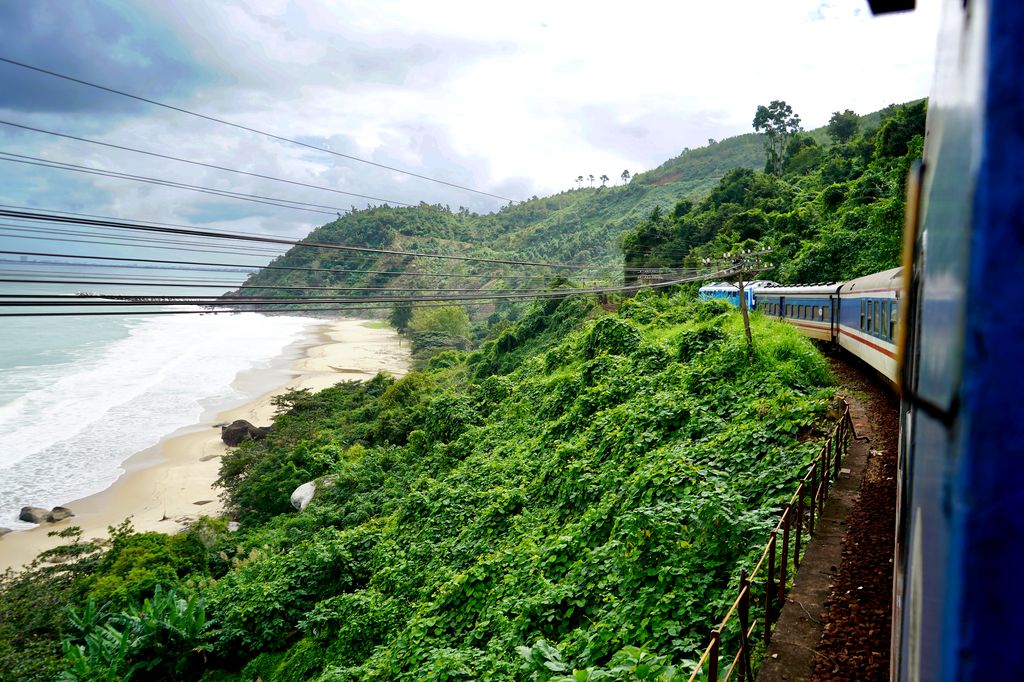
The Reunification Express route feels like it was purposely built through the most beautiful parts of the countryside in Vietnam.
The vast plains of rice paddies with farmers in conical hats harvesting the staple, the red dirt of the flatlands with dozens of tiny streams snaking through them, the dense forests filled with tropical plants, the misty mountainsides and passes swathed with ancient trees and elegant birds… everything you can view from your window is like watching a travelogue unfold in front of your eyes.
My dozens of hours on the train in Vietnam have provided me with my most vivid mental snapshots from my time admiring the beauty of this country.
Comfort
If you go with the first-class ticketing option (more on that below), the trains in Vietnam are comfortable and spacious. The train doesn’t feel claustrophobic like other modes of transportation might, always giving you the opportunity to stretch your legs if you need to.
Even sleeping on the trains is comfortable as long as you’re in first class. People are often concerned the beds might be too small since Vietnamese people tend to be shorter or too hard since there’s an old Vietnamese custom of sleeping on hardwood mats. They’re pleasantly surprised, though, to find that the beds are soft and won’t give anyone less than 6 feet too much trouble.
Safety
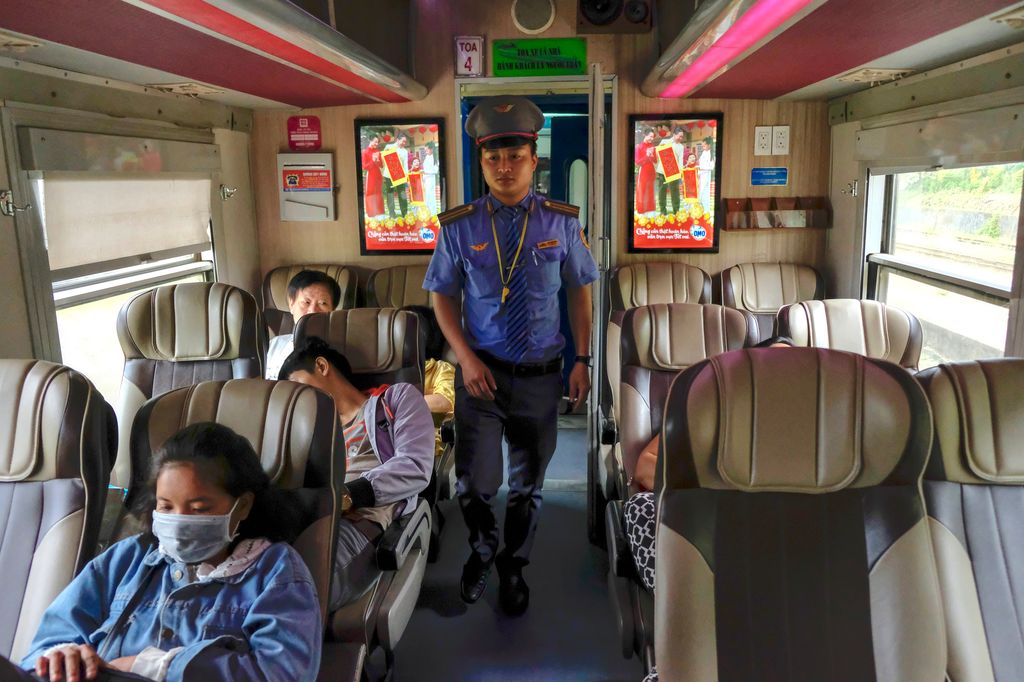
The train is the safest way to travel in Vietnam for two reasons:
- You won’t be in cramped spaces with lots of people like those found at airports or on buses. Unfortunately, congested spaces like those are often hotbeds for pickpockets in Vietnam. I’ve encountered many travelers who were a bit too careless with their belongings while traveling in Vietnam and paid the price.
- The traffic in Vietnam is notoriously crazy. The traffic in cities is pretty chaotic, but the really dangerous stuff occurs out on the highways when vehicles are going a lot faster and there are lots of big rig trucks. The craziness of inter-city traffic makes traveling by bus or by private vehicle more dangerous than some travelers are comfortable with.
Hassle-Free Travel
Train travel is simple compared to traveling via plane or even bus. Just show up to the station with your tickets (or at least an hour early without tickets if you want to buy them on-site), show them to the ticket taker, make your way to the platform just a few steps away, and you can file onto the comfortably-sized train when it’s time to leave.
There are no baggage fees or long security lines. The vendors at the train station sell food and drink at normal street prices. The stations are small and are located in the middle of the city. It’s just an all-around simpler and more hassle-free experience.
Hop On, Hop Off
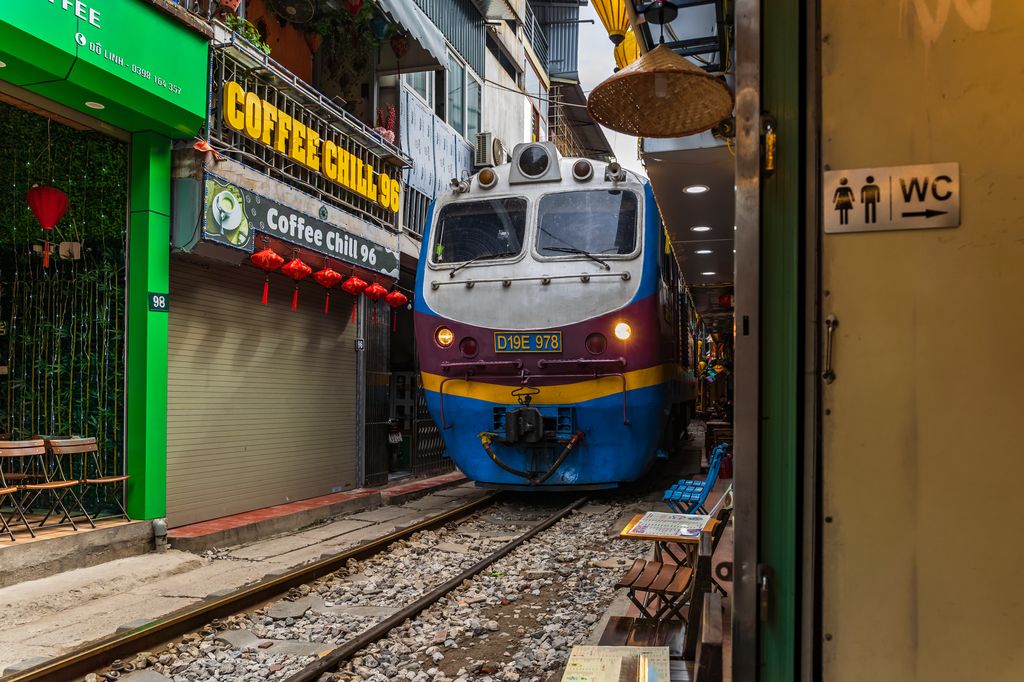
As I said, Vietnam’s Reunification Express has around 190 stops – I’ll go into more detail about the individual stops later. You can get off where you please and resume your journey almost whenever you want. Some of my best memories of my travels in Vietnam occurred during 3-4 hour train journey stops I made on a whim in small towns I would never have visited otherwise.
Unfortunately, there’s not an actual “hop on, hop off” style ticket that allows unlimited train travel within a set time like the JR Pass in Japan. With a little planning, though, you can make your own.
Eco-Friendliness
Trains are hands-down the most energy-efficient form of cross-country transport (see table below for an example journey). I’ve also included the average price and time taken.
| Hanoi to Da Nang | Price | Time (hr) | Carbon Footprint per Capita CO2 |
| By Plane (Budget) | $65 | 1.5 | 220 lbs/100 kg |
| By Taxi | $500 | 17 | 330 lbs/150 kg |
| By Bus | $30 | 17 | 110 lbs/50 kg |
| By Train (First Class) | $70 | 15 | 55 lbs/25 kg |
Price
As you can see in the table above, traveling in first class on a train is almost the same price as traveling on the cheapest flight possible. It’s much, much cheaper than traveling by taxi. First-class train tickets are about twice as much as bus tickets, but second-class train tickets (which provide the same level of comfort as cross-country buses) are just as cheap as the bus.
What to expect on board
Classes
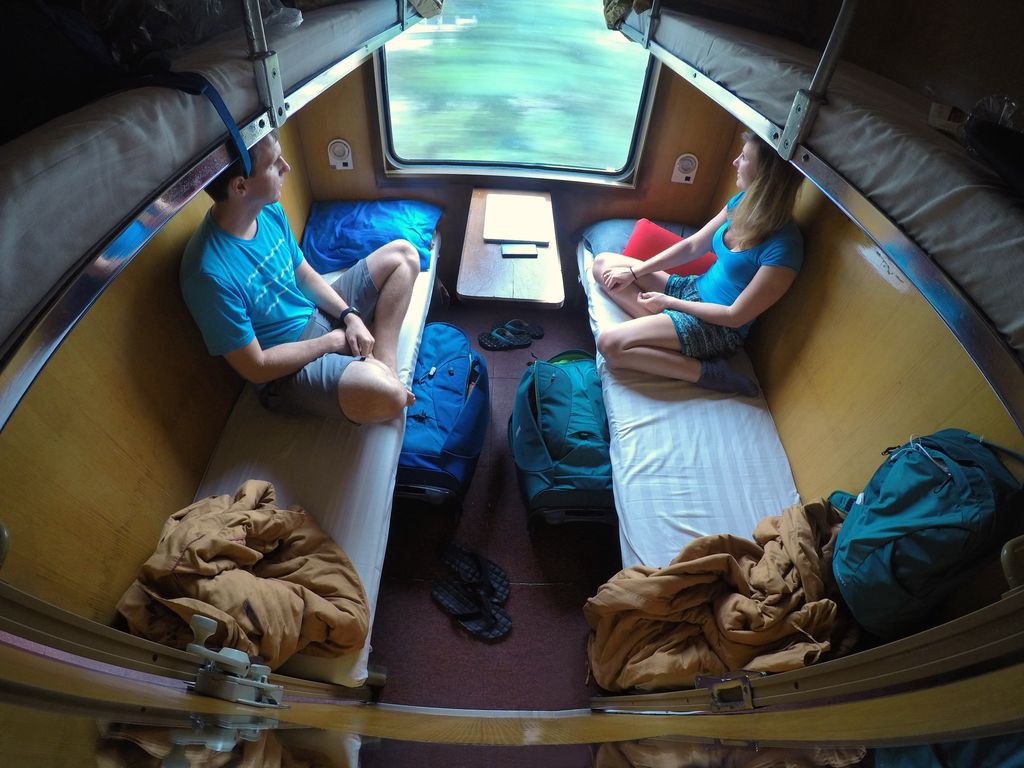
The trains that run up and down Vietnam’s Reunification Railroad carry three “classes” of cars. You can read descriptions of each below, but generally, I recommend:
- Second class for short journeys
- First class for long journeys
Third Class (Hard Seats)
The cheapest option, but you get what you pay for. Hard wooden or plastic seats make it an uncomfortable choice, and the windows of the cars are often pretty dirty so you won’t be able to enjoy the passing scenery as much. Plus, the cars are mostly cooled only by fans so they can get a bit stuffy.
Third-class cars are more crowded, too, especially since each of the 1.5-meter benches in the cars comprises three ticketed seats. Because of that, third-class cars are more dangerous in terms of pickpocketing.
All that being said, a short ride in a third-class car can be a really cool cultural immersion experience. Most of the people riding in the car will be local commuters or families who will be in full-on Vietnamese relaxation mode, chatting animatedly or playing cards in the aisles.
Second Class (Soft Seats)
The car interior is on par with what you’d expect on a really nice bus. That is, padded seats that recline, plenty of legroom, and air conditioning. Relaxing in one of the comfy seats and watching the country pass by on the other side of the car’s picture windows is a fantastic way to while away a few hours.
Most of the seats in second-class cars are arranged in rows like you might expect, but there are usually two dining-sized tables in each car with a padded bench on either side. The seats around the tables are the most desirable places for groups to sit and they’re often taken first, so be prepared to show up to the station early (usually the trains arrive at the stations 30 minutes to 1 hour before departing) if you want to snag one of them.
First Class (Sleeper Berths)
First-class cars are further divided into two types: hard berth and soft berth.
Hard berth cabins have six beds arranged into three “levels.” The beds are a bit hard and could probably be more accurately described as “cots,” but you’ll probably be able to get some good shut-eye on them anyway. The beds are nearly 1.8 meters (6 feet) each, so most travelers should have no issues stretching out.
The soft berth cabins only have four beds arranged into two “levels,” and they’re (you guessed it) softer and more comfortable.
Both hard berth and soft berth cars have their own electrical outlets and reading lights, and both are air-conditioned.
Every cabin only has a single window, though, so I wouldn’t recommend this option if your main purpose in riding the train is to see the Vietnamese scenery.
Toilets
The cleanliness of toilets onboard is probably the biggest weakness of Vietnam’s train network. If you’re lucky, the toilet might be cleaned by a talented janitor right before your trip and will be pristine when you use it. But it’s more likely that your bathroom experience on the train will be mediocre at best.
Here are a few tips to help you avoid any toilet troubles:
- Use a non-mobile restroom right before your trip. It will minimize the chance you need to worry about any of this.
- Walk to different cars to see which has the best bathroom. This is doubly applicable if you’re in third class, as third-class bathrooms tend to be filthy and sometimes only have a squat toilet. Even among nicer cabins, though, toilet cleanliness can vary significantly. You can scout for the best bathroom at the start of the trip or explore the cabins during the trip.
- Wait until just after departing from a major stop (listed later in this article) to use the toilet. The bathrooms are often given light cleanings at each of those major stops, so afterward is when they’ll be at their cleanest.
- Bring your own toilet paper. Onboard bathrooms usually only have “bum guns”, and even those are broken sometimes.
Food
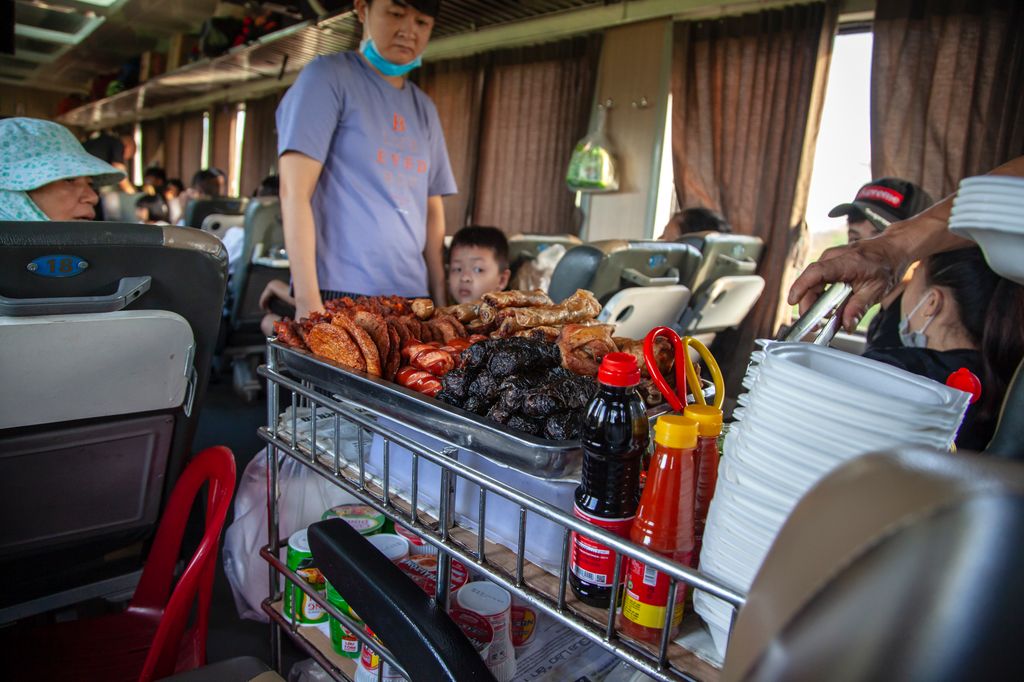
I love the food on Vietnam’s trains. It’s not exactly five-star cuisine, but it’s extremely authentic and is only slightly costlier than Vietnamese street food prices.
You’ll have two main options in regards to eating onboard:
- The vendors. Vietnamese food merchants walk up and down the aisles selling to passengers. Some of them are hawking snack foods like potato chips, soft drinks, and Vietnamese munchies like rice cakes and fried shrimp crackers. Others sell more substantial meals like rice with stewed meat, fresh spring rolls, or Chinese-style pork buns. The vendors generally get on at one stop and deboard at the next stop, so the meals are still hot and fresh if you buy them.
- The dining car. Each train includes one car that’s essentially a mobile restaurant. It’s a great place to unwind, stretch your legs, and strike up a conversation with your fellow passengers if you’re in the mood. It’s also the place to go if you’re hungry for something more substantial, like a bowl of phở or a heartier plate of cơm tấm than you can buy from one of the vendors in the passenger cars. I got a bowl of bún riêu cua in the dining car last time I rode the train for only 50k, and it was honestly better than a lot of the local street food.
Food safety is not a large concern on the trains, either. As I said, most of the food vendors get on at one stop and off at the next, so their wares are fresh. And there’s a full-fledged kitchen in the dining car, something that I love to see at any Vietnamese eatery because it adds a measure of safety.
Booking Tickets
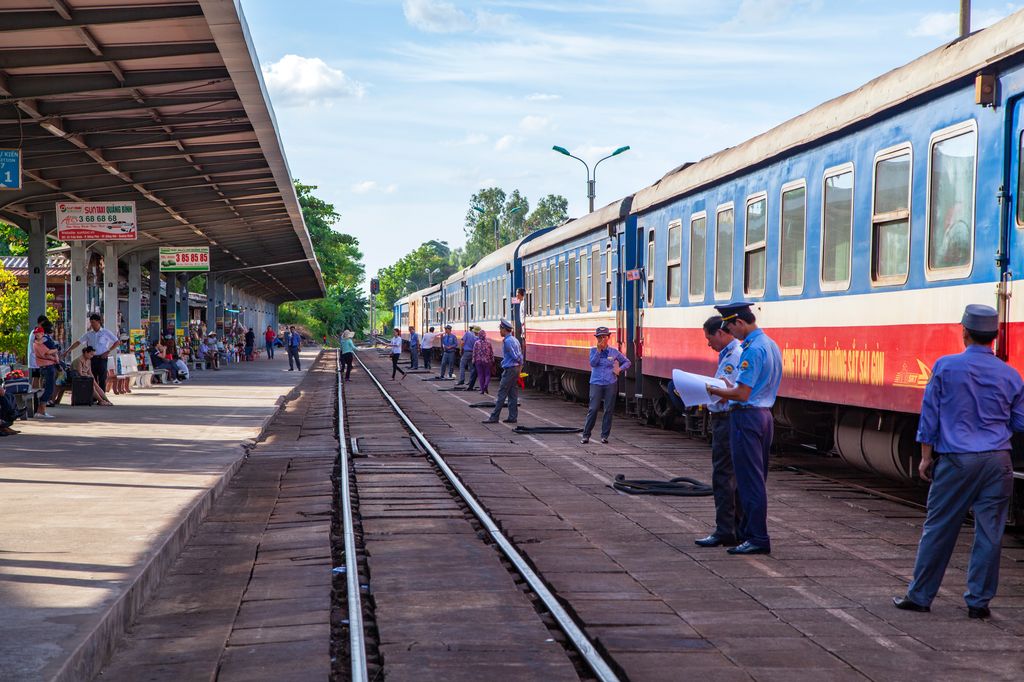
My go-to source for booking train tickets in Vietnam is 12go.asia. It’s even cheaper than the official railway portal most of the time (still not sure how that works, but I’m just gonna go with it), and I’ve never had an issue with their services like failing to receive the ticket by email or anything like that.
Search & book at 12goYou can search on 12Go and simply specify “trains” for your desired results.
Some travelers may prefer to buy their ticket from the official Vietnam Railway booking platform because it’s slightly more streamlined and cleaner than 12go. With convenience comes an added price, though. For reference, I found a second class (soft seat) ticket from Ho Chi Minh City to Nha Trang for 400k on 12go.asia and 1.1 million VND on the official site.
Regardless of what site you buy Vietnamese train tickets from, an actual ticket with a barcode will be emailed to the address you enter when purchasing. You’ll need to show the barcode to the clerk at the station, and they’ll tell you what train to get on.
If you want to buy third-class tickets, you’ll have to book them directly at the station.
Recommended Stops
Vietnam’s North-South Railway comprises around 190 stations stretching across 21 of the country’s 57 provinces. Most of the stations are located in small towns that only local commuters and the most adventurous of travelers will want to get off at, but some of them are premier destinations.
In this section, I’ll run through some of the stations I recommend considering a stop at. Some of them are in big cities, some are in quaint smaller towns, and some of them are in naturally beautiful areas. Later, I’ll give you a template to construct a 3-week Vietnam itinerary using the train.
Hanoi
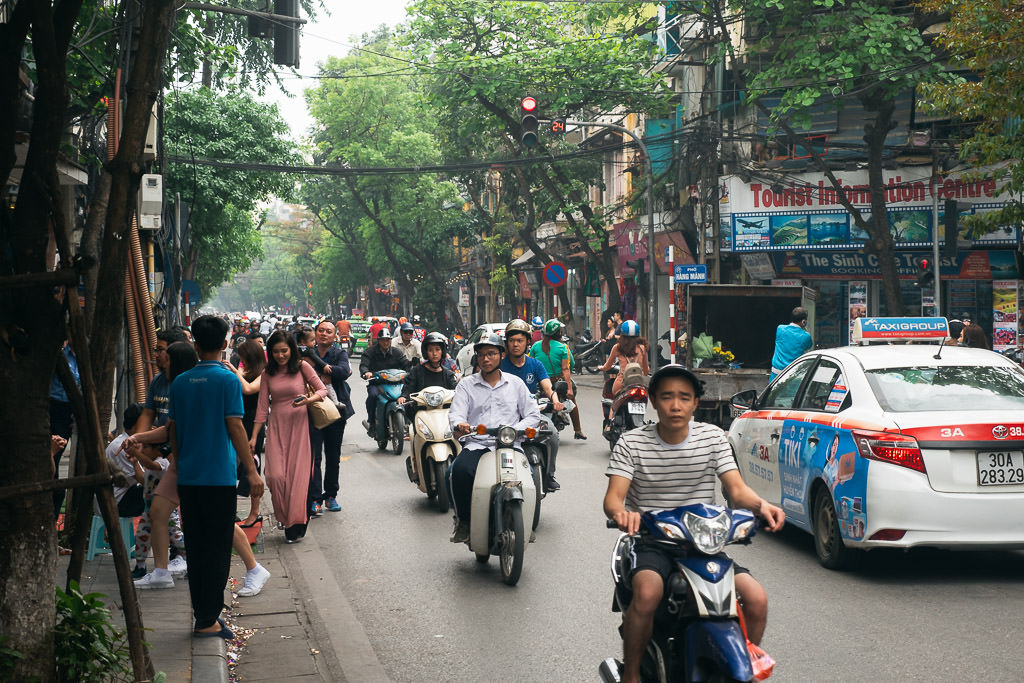
The capital of Vietnam probably needs no introduction, but if you want to read more about it you can do so in our guide to the hidden side of Hanoi.
I should mention that the Hanoi Train Station is also the endpoint for a few other lines, including one to the hill tribe haven Sapa and one to the Vietnam-China border.
This stop is great for:
- Urban Culture
- Food
- History
- Central Location
- International Airport
- Luxury Travel
- Who are we kidding, you’re not going to visit northern Vietnam and not go to Hanoi
Ninh Binh
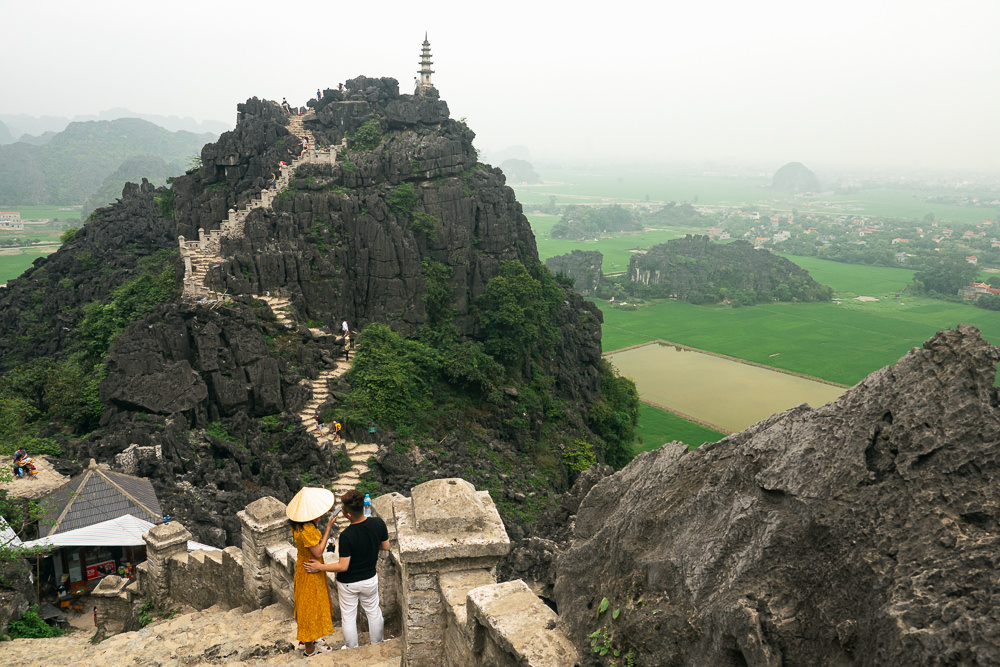
Check train tickets from Hanoi to Ninh Binh
Ninh Binh is known as “Ha Long Bay on Land”, but I think that’s actually underselling it. The lush green fields and karst mountains that dot the town are amazing, but it’s also got the historical and religious hotspot of Hoa Luu to explore. It’s also a good stop for wildlife lovers if they visit Cuc Phuong or Van Long National Parks.
For recommendations regarding things to do and places to stay in Ninh Binh, check out my off-the-beaten-track guide to the area.
This stop is great for:
- Natural beauty
- History
- Religious Culture
- Wildlife Viewing (in specific places)
Dong Hoi
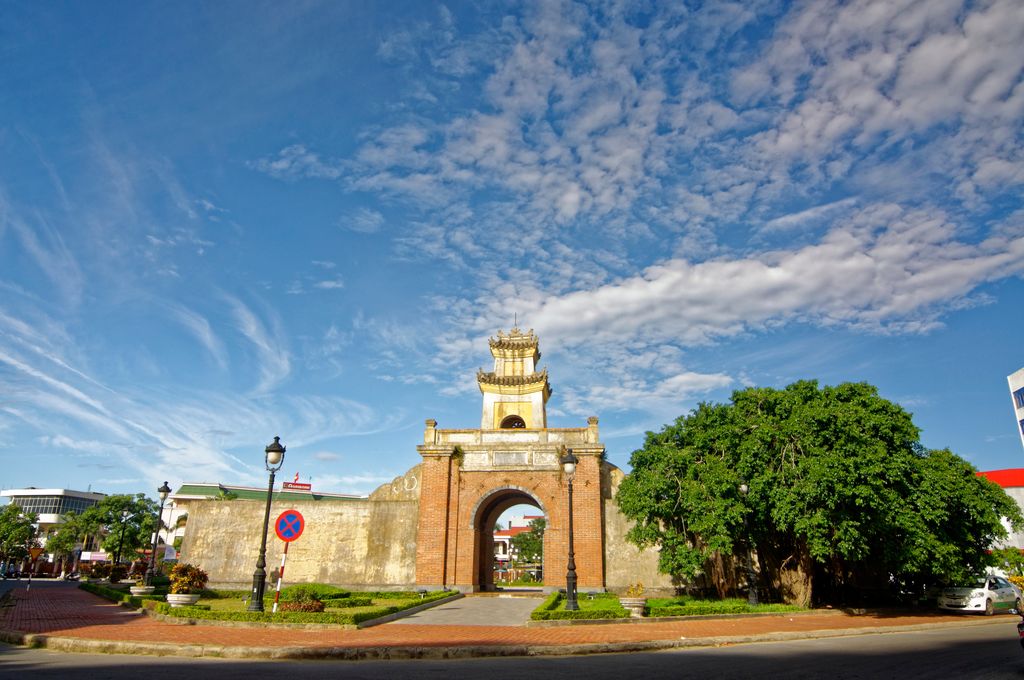
Check train tickets from Ninh Binh to Dong Hoi
Dong Hoi is my favorite small city in Vietnam. The place is sleepy and uneventful, but the design of the city is gorgeous, melding together the desolate beauty of Central Vietnam with the modern trappings of a quickly developing part of the country perfectly. I’m weirdly drawn to quaint towns without much going on, though, and I acknowledge that many people may be bored in Dong Hoi before too long.
The centerpiece of the city in terms of beauty is the Nhat Le River, which runs through the center. There are walkways and parks along the river that make for a beautiful evening stroll, especially because the city’s residents are very friendly and love to walk, relax, and exercise by the river in the evenings. The river is also spanned by a bridge that’s lit up with multicolored lights every night.
The main attraction in the Dong Hoi area for most travelers, though, will be Phong Nha-Ke Bang National Park, about an hour west of Dong Hoi train station. Phong Nha is home to the biggest cave on Earth, Son Doong Cave. The park also has a ton of other caves that are, no exaggeration, some of the most otherworldly caverns I’ve ever experienced. Check out my full guide to Phong Nha-Ke Bang and the surrounding area for recommendations on activities and accommodation.
This stop is great for:
- Quaint urban vibes
- Caving
- Natural Beauty
Hue
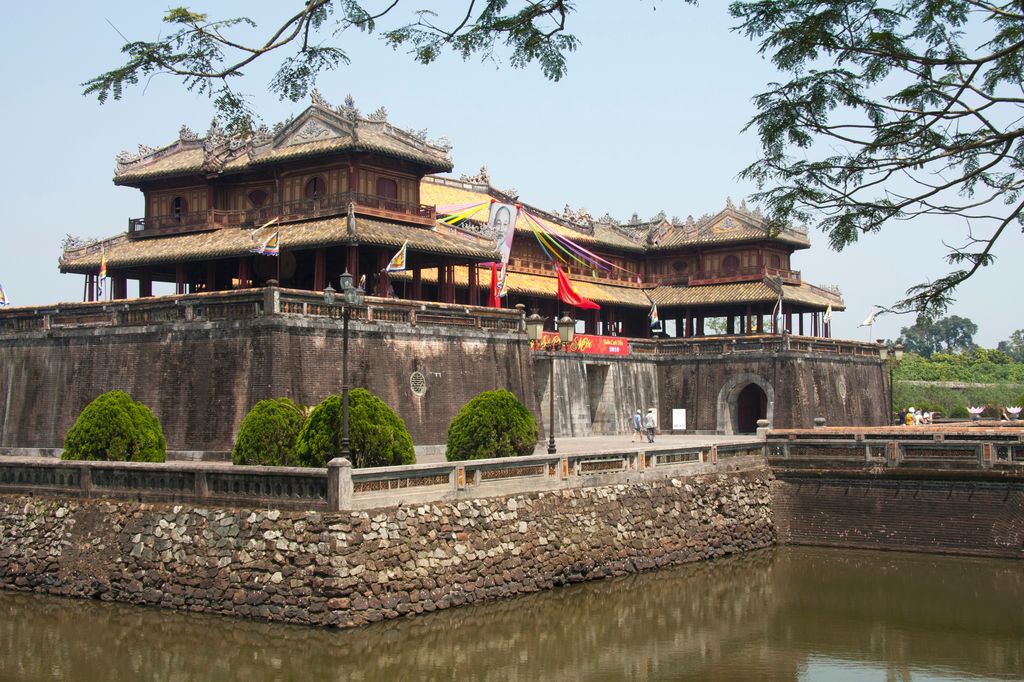
Check train tickets from Dong Hoi to Hue
Hue is the most historically and culturally rich city in Vietnam. It’s the imperial capital of Vietnam, home to the imperial citadel, royal tombs, and more attractions that will put history and culture buffs in heaven. It’s also considered “the most romantic city in Vietnam.” Read up on it in my Hue city guide.
This stop is great for:
- Cultural immersion
- Pre-colonial history
- Central Vietnamese cuisine
- Quaint Urban vibes
Da Nang
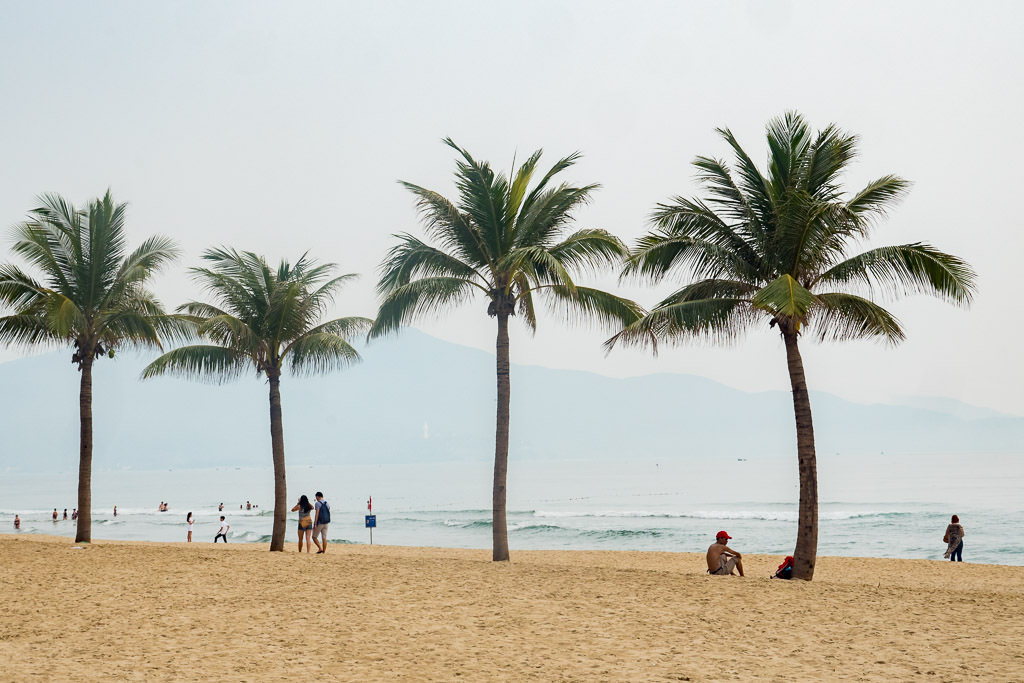
Check train tickets from Hue to Da Nang
Da Nang is the de facto capital of Central Vietnam. I have an entire guide to Da Nang that you can read for recommendations on how to structure your trip here.
Da Nang is also a great jumping-off point for a visit to Hoi An, which, in 2024, Travel and Leisure ranked 5th on its prestigious list of “25 Most Beautiful Cities in the World.” It also ranked Hoi An as the #1 city in the world for solo travelers. Read my Hoi An guide for more info.
This stop is great for:
- Urban culture
- Beaches
- Central location
Tam Ky
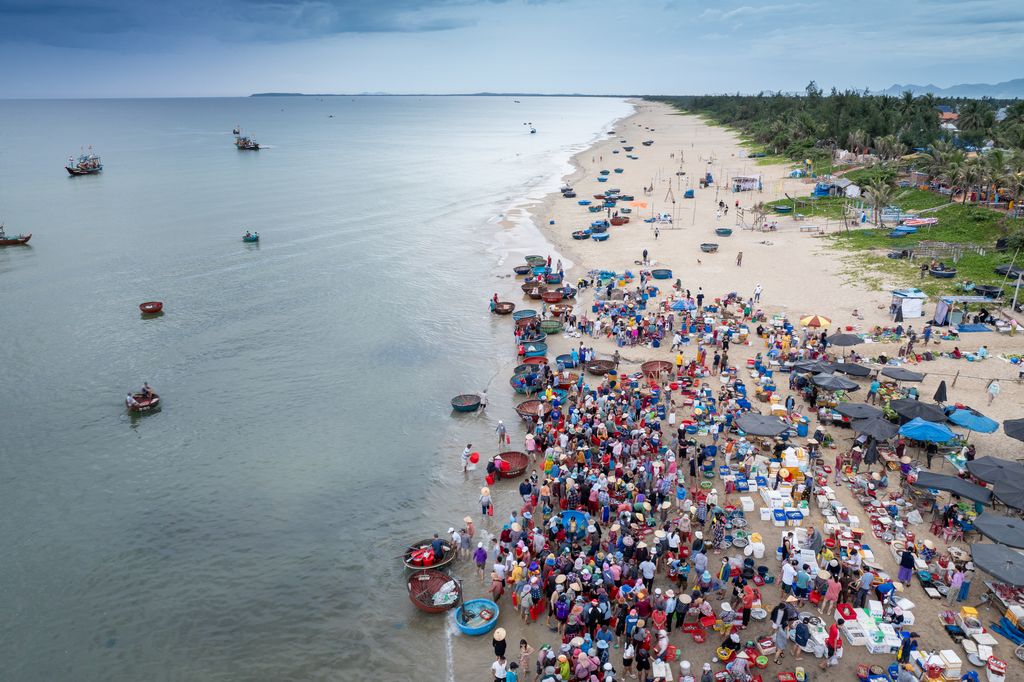
Check train tickets from Da Nang to Tam Ky
Tam Ky is a great example of all Vietnam’s Central Coast Region has to offer.
What to Do in Tam Ky
Some highlights include:
- Tam Thanh Mural Village, an old fishing village that’s become an outdoor art gallery. The countless murals and paintings touted by local artists there are a good way to see the area’s nautical influences.
- Ky Anh Tunnels, a much less touristy alternative to the wartime history hotspot Cu Chi Tunnels. Admission is 50k/adult.
- Tam Thanh Beach, a peaceful and picturesque beach with some cheap and delicious seafood stalls nearby.
- Dong Giang Tea Hill, a plantation about 30 km (19 miles) out of Tam Ky where you can go for fantastic rural vistas and fresh tea tastings. English is not often used here, so it’s best to go with someone who speaks Vietnamese and can translate.
- If you go during March or April, a cream-colored flower called hoa sữa (milk flower) blooms across the city. It’s not only beautiful but is also the best-smelling flower variety I’ve ever encountered.
Where to Stay in Tam Ky
This stop is great for:
- Coastal Culture & Art
- Wartime History
- Natural Beauty
Quy Nhon
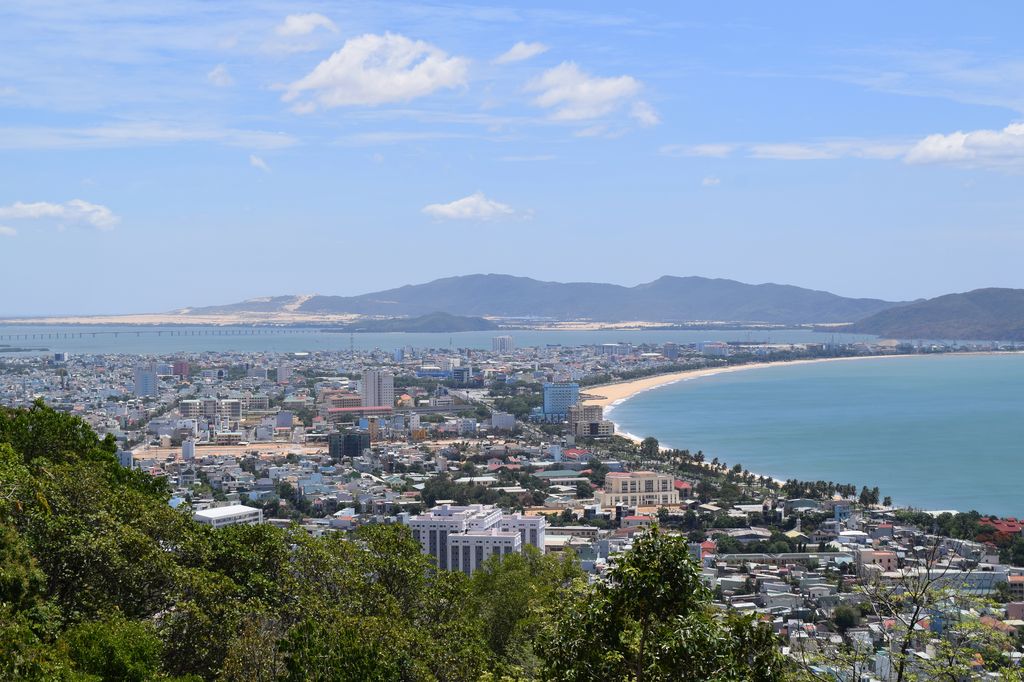
One of Vietnam’s best seaside locations. I’d recommend going on to Nha Trang, the next stop if you’re only looking for the country’s nicest beaches, but the area around Quy Nhon still has that peaceful “fishing village” feel that Nha Trang doesn’t. Read our full Quy Nhon guide for more info.
This stop is great for:
- Beaches
- Coastal Culture
- Fishing Villages
Nha Trang
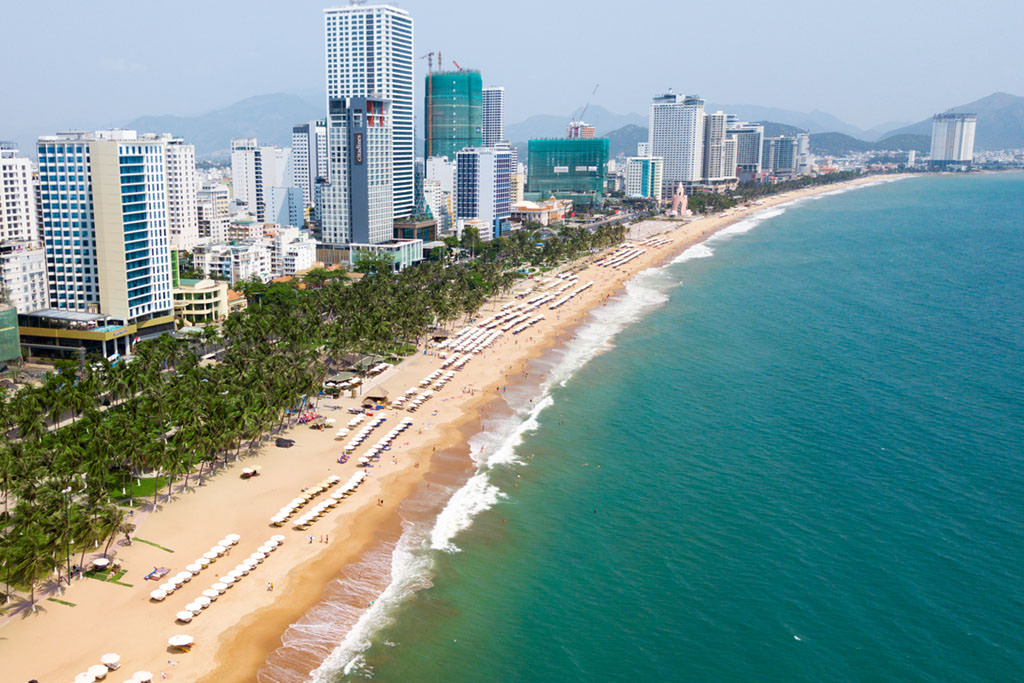
Nha Trang is a hugely popular tourist destination because it has the nicest beaches, the best snorkeling, and the most active watersports community in Vietnam.
What to Do in Nha Trang
Nha Trang also has a well-developed tourist infrastructure, with some of the most notable activities including:
- Snorkeling and scuba. In fact, Nha Trang is really the only place in Vietnam with water that’s truly good for diving.
- Nightlife. Nha Trang is famous for its countless intense bars and clubs that stay open all night.
- Island-hopping. Just offshore from Nha Trang lies a chain of islands. Some of the islands, like Binh Ba or Binh Hung, are simple fishing islands. Others are tourist islands and contain attractions, like the VinWonders Nha Trang amusement park on Hon Tre or the mud baths on Hon Tam.
Where to Stay in Nha Trang (Near the Train Station)
- Florida Nha Trang Hotel – 900k/night
- Aaron Boutique Hotel – 750k/night
- Khang’s House – 380k/night
This stop is great for:
- The best beaches in Vietnam
- Nightlife
- Snorkeling and Diving
- Amusement Parks and Water Parks
- Seafood
Thap Cham
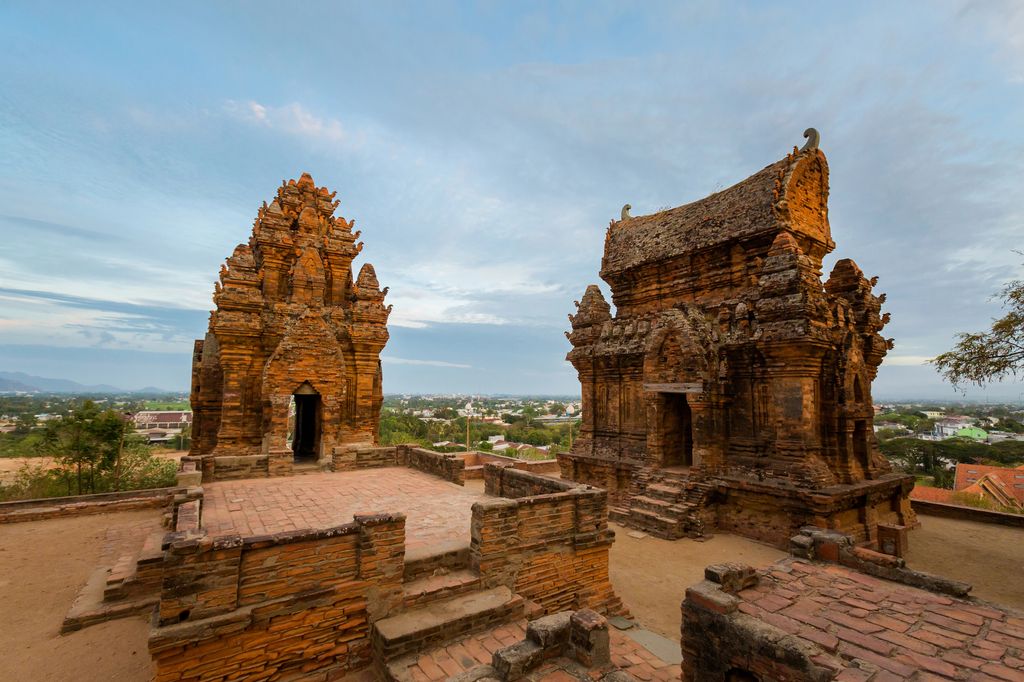
Thap Cham is, in my opinion, the best destination for ancient ruins in Vietnam. The Angkor Wat Temples in Cambodia get much more attention, but Thap Cham’s Hindu temples from the 7th through 13th centuries give them a real run for their money.
What to Do in Thap Cham
Temple exploration easily be a full-day excursion because Thap Cham’s temples are spread out over a huge, flat area. It’s good for exploring via one of the motorbikes or bicycles that you can rent for just a few bucks a day from most hotels in town. The most popular temples are Po Klong Garai Tower and Po Rome Tower.
The craft villages around Thap Cham, like Bau Truc Pottery Village and My Nghiep Silk Village, are really cool as well. You can watch people make the products by hand using traditional techniques, and you can see the care and precision going into the work. If I were to write a list of the best places in Vietnam to buy gifts, those villages would take one of the top spots.
Lastly, Thap Cham has some unspoiled beaches that are some of the cleanest I’ve seen in Vietnam. Ninh Chu Beach is a good place to start. The beaches around Vinh Hy Bay, a 50-minute drive to the north, have great snorkeling and are right next to quaint fishing villages.
Where to Stay in Thap Cham (Near the Train Station)
I feel like Thap Cham works best as a day trip, but staying one night in one of these accommodations would work too:
- Sea Urchin Hostel – 450k/Night
- Devsun Hotel – 1 million/night
This stop is great for:
- Ancient ruins
- Ancient history
- Cycling
- Buying gifts
Phan Thiet (aka Muong Man Station or Binh Thuan Station)

It’s honestly amazing how quiet and peaceful Phan Thiet feels given that it’s a popular domestic tourist destination. It’s really not very developed, although there are plenty of resorts near the beach side of town and the town of Phan Thiet has a healthy population of around 230,000.
What to Do in Phan Thiet
Phan Thiet is mainly a beach town and the sands themselves are alright – Phu Quoc, Nha Trang, or even Quy Nhon would be better bets for beautiful beaches in South Vietnam. What I find most impressive about the area, though, is just how diverse its geography is. Even though you’re on the coast, you can drive to the desert, mountain, or river in just a few minutes.
Some of the most notable destinations that take advantage of the stunning terrain are:
- The Fairy Stream, maybe the most geographically interesting place I’ve been in Vietnam. A shallow river runs through red rocks on one side and a green riverbank on the other. The bottom of the stream is soft silt, so you can hike down it while keeping your feet cool. There’s an ostrich-riding farm along the way.
- The red sand dunes, where you can rent ATVs.
- The white sand dunes, which are taller than the red ones.
- Trekking or cycling at Ta Cu Mountain.
- Walking around the fishing villages on Phan Thiet Bay.
There are Jeep tours that take you to several interesting landmarks in Phan Thiet – my girlfriend and I went with the creatively named Muinejeeptour itinerary and had a great time.
Where to Stay in Phan Thiet (Near the Train Station)
- Vitamin Sea Homestay – 400k/night
- Eco House Villa – 620k/night
- Ruben’s Boutique Hotel – 800k/night
This stop is great for:
- Water sports
- Beaches
- Desert nature
- Diverse terrain
Ho Chi Minh City
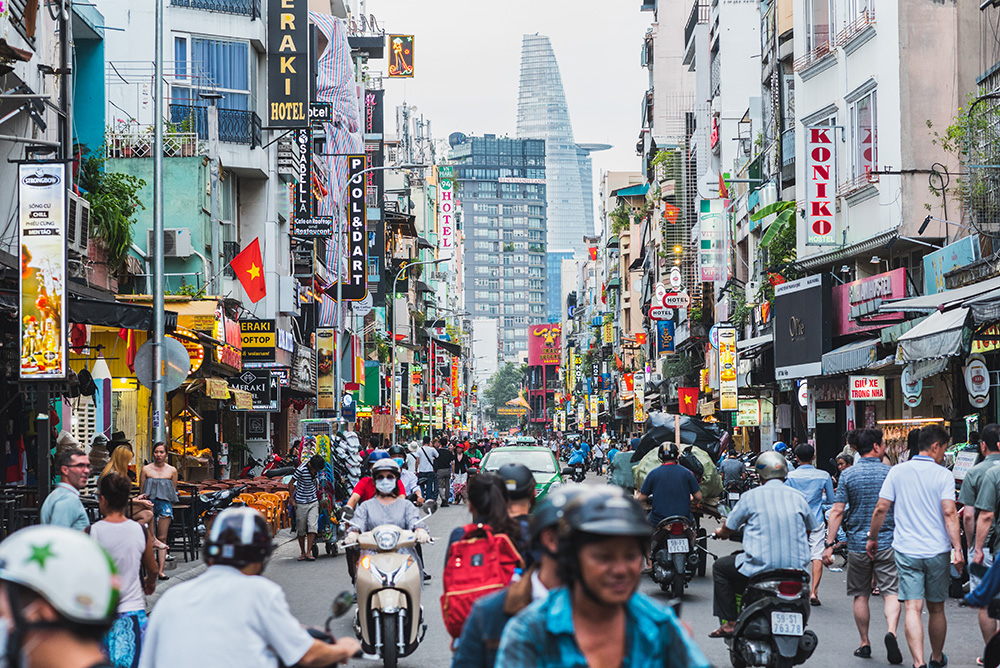
Check train tickets from Phan Thiet to Ho Chi Minh City
Vietnam’s “city that never sleeps”, Saigon has been my home for 10 years and I never get bored. There are hundreds of fun things to do in this city and I could write hundreds of pages about them all. In fact, I have. Check out a few of them in the Ho Chi Minh City guide or my hidden gems in Ho Chi Minh guide.
This stop is great for:
- Urban culture
- Nightlife
- Foodies
- Cafes
- Pretty much everything imaginable
A 3-Week Vietnam Itinerary by Train
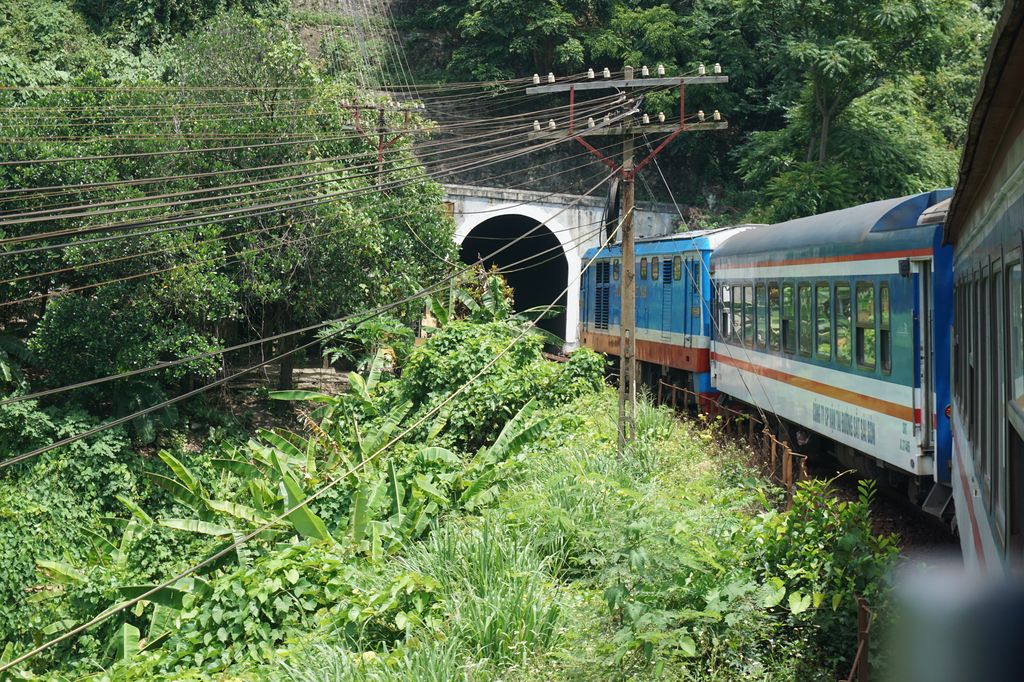
In this section, I’ll propose three itineraries centered around train travel in Vietnam: a North Vietnam itinerary, a South Vietnam itinerary, and an itinerary that spans the whole country. All itineraries include Central Vietnam because I think it’s the very prettiest part of the country to ride the train in. I’ll also include a suggested time of year for each of these itineraries so you can catch the best weather, based on my guide about when to travel to different parts of Vietnam.
Refer to my section on each stop above for suggestions about what to do in the area.
North and Central Vietnam Itinerary by Train
This trip is a good way to see the mountains, endless rice paddies, and limestone karsts that make North Vietnam so majestic.
Best Times to Do It: March-April
Suggested Itinerary:
- Arrive at the international airport in Hanoi, and stay for 5 nights
- Hanoi-Ninh Binh train (2hr, 15min)
- Ninh Binh for 2 nights and tour Hoa Luu while there
- Dong Hoi for 2 nights (including a full-day trip around Phong Nha)
- Dong Hoi-Hue train (3hr)
- Hue for 3 nights
- Hue to Da Nang train (2hr, 30min)
- Da Nang for 3 nights
- Car from Da Nang to Hoi An (50min)
- Hoi An for 4 nights
- Car from Hoi An to Da Nang (50min)
- Da Nang for 1 night before departing from the international airport
South and Central Vietnam Itinerary by Train
This itinerary will be geared more towards the sunny, tropical beaches and flatlands of Southern Vietnam.
Best Time to Do It: January-February
Suggested Itinerary:
- Arrive at the domestic airport in Hue, and stay for 2 nights
- Hue-Da Nang train (2hr, 30min)
- Da Nang for 2 nights
- Car from Da Nang to Hoi An (50min)
- Hoi An for 3 nights
- Car from Hoi An to Da Nang (50min)
- Da Nang for 1 night
- Da Nang-Tam Ky train (1hr, 45min)
- Tam Ky for 2 nights
- Tam Ky-Dieu Tri train (4hr)
- Car from Dieu Tri-Quy Nhon (25min)
- Arrive in Quy Nhon, stay for 2 nights
- Car from Quy Nhon-Dieu Tri station (25 min)
- Dieu Tri-Nha Trang train (3hr, 30min)
- Nha Trang for 3 nights
- Nha Trang-Thap Cham train (1hr, 30min)
- Thap Cham day trip (evening trip to Ga Muong Man)
- Thap Cham to Ga Muong Man train / Thap Cham to Binh Thuan train (2hr, 30min)
- Car from Ga Muong Man-Phan Thiet (15min)
- Phan Thiet for 2 nights
- Car from Phan Thiet-Ga Muong Man station (15min)
- Ga Muong Man-Ho Chi Minh City train / Binh Thuan-Ho Chi Minh City train (3hr, 30min)
- Ho Chi Minh City for 4 nights before leaving from international airport
Full Vietnam Itinerary by Train
This itinerary packs a lot into a few weeks and will probably involve a lot of tired feet and Vietnamese coffee consumption, but it will show you the full span of Vietnam’s epic geography.
Best Time to Do It: February-March
Suggested Itinerary:
- Arrive at the international airport in Hanoi, and stay for 3 nights
- Hanoi-Ninh Binh train (2hr, 15min)
- Ninh Binh for 2 nights and tour Hoa Luu while there
- Dong Hoi for 2 nights (including a full-day trip around Phong Nha)
- Dong Hoi-Hue train (3hr)
- Hue for 2 nights
- Hue to Da Nang train (2hr, 30min)
- Da Nang for 1 night
- Car from Da Nang to Hoi An (50min)
- Hoi An for 3 nights
- Evening car from Hoi An to Da Nang (50min)
- Overnight Da Nang-Nha Trang train (9hr, 30min)
- Nha Trang for 3 nights
- Nha Trang-Ga Muong Man / Nha Trang-Binh Thuan (4hr)
- Car from Ga Muong Man-Phan Thiet (15min)
- Phan Thiet for 2 nights
- Car from Phan Thiet-Ga Muong Man station (15min)
- Ga Muong Man-Ho Chi Minh City train / Binh Thuan-Ho Chi Minh City train (3hr, 30min)
- Ho Chi Minh City for 3 nights before leaving from international airport
There are of course some amazing parts of Vietnam that don’t lie along the North-South Railroad – Phu Quoc, Sapa, Ha Giang, and Da Lat are just a few that immediately spring to mind. They can be tacked onto the train itinerary if you have time.
Header image: iStock.com / xuanhuongho



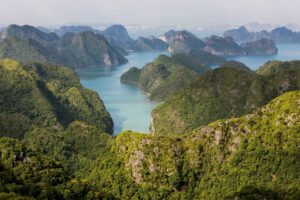




All comments are moderated before they appear.